Showing Spotlights 345 - 352 of 2780 in category All (newest first):
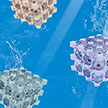 Hydrogels are fascinating natural or synthetic polymer materials that exhibit very versatile chemistries and physical or biological properties. They are 3D networks of either physically or chemically crosslinked polymers that resemble organic tissues and that can hold large amounts of water within their interlocked molecular network. These soft, translucent materials swell or shrink in response to water absorption or desorption and can hold a large amount of water without losing their structural integrity.
Hydrogels are fascinating natural or synthetic polymer materials that exhibit very versatile chemistries and physical or biological properties. They are 3D networks of either physically or chemically crosslinked polymers that resemble organic tissues and that can hold large amounts of water within their interlocked molecular network. These soft, translucent materials swell or shrink in response to water absorption or desorption and can hold a large amount of water without losing their structural integrity.
Aug 30th, 2021
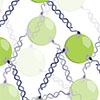 In addition to the plethora of functions such as storage of genetic information and regulation of its expression, DNA and RNA are also highly programmable biomaterials. DNA can be utilized to design short complementary sequences to be used as the linkers which bring together and organize other biological and inorganic materials. Quantum dots are one such inorganic candidate. Researchers now utilized DNA for the precise assembly of QDs into larger three-dimensional scaffolds.
In addition to the plethora of functions such as storage of genetic information and regulation of its expression, DNA and RNA are also highly programmable biomaterials. DNA can be utilized to design short complementary sequences to be used as the linkers which bring together and organize other biological and inorganic materials. Quantum dots are one such inorganic candidate. Researchers now utilized DNA for the precise assembly of QDs into larger three-dimensional scaffolds.
Aug 18th, 2021
 Resistive-switching memory (RSM) is an emerging candidate for next-generation memory and computing devices, such as storage-class memory devices, multilevel memories and as a synapse in neuromorphic computing. A significant challenge in the global research efforts towards better energy technologies is efficient and accurate device modeling. Now, researchers have created a new modeling toolkit which can predict the current of a new type of memory with excellent accuracy.
Resistive-switching memory (RSM) is an emerging candidate for next-generation memory and computing devices, such as storage-class memory devices, multilevel memories and as a synapse in neuromorphic computing. A significant challenge in the global research efforts towards better energy technologies is efficient and accurate device modeling. Now, researchers have created a new modeling toolkit which can predict the current of a new type of memory with excellent accuracy.
Aug 11th, 2021
 Negative differential resistance (NDR), which describes a decrease in electrical current as the applied bias increases, has always been one of the hottest topics in solid-state electronic devices since L. Esaki first demonstrated this phenomenon in heavily-doped Ge p-n junctions in 1958. Researchers now report the modulation of a unique room-temperature NDR effect with high peak current in ambipolar black phosphorus transistors. The simplicity of this structure, combined with the recent progress in scalable production of BP films, makes the BP NDR devices promising for practical electronic applications.
Negative differential resistance (NDR), which describes a decrease in electrical current as the applied bias increases, has always been one of the hottest topics in solid-state electronic devices since L. Esaki first demonstrated this phenomenon in heavily-doped Ge p-n junctions in 1958. Researchers now report the modulation of a unique room-temperature NDR effect with high peak current in ambipolar black phosphorus transistors. The simplicity of this structure, combined with the recent progress in scalable production of BP films, makes the BP NDR devices promising for practical electronic applications.
Aug 10th, 2021
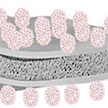 Lithium-sulfur (Li-S) batteries are a promising alternative to lithium-ion batteries because - at least theoretically - they can render 3-6 times higher energy density. In developing Li-S battery technology, researchers have borrowed many components from the mature lithium-ion battery, such as the separator. However, because the working mechanism of Li-S cells is fundamentally different, there is a need for a suitable separator specifically designed for Li-S. Re-engineering the separator can improve the energy density of Li-S batteries.
Lithium-sulfur (Li-S) batteries are a promising alternative to lithium-ion batteries because - at least theoretically - they can render 3-6 times higher energy density. In developing Li-S battery technology, researchers have borrowed many components from the mature lithium-ion battery, such as the separator. However, because the working mechanism of Li-S cells is fundamentally different, there is a need for a suitable separator specifically designed for Li-S. Re-engineering the separator can improve the energy density of Li-S batteries.
Aug 5th, 2021
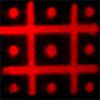 The bottleneck in atomic-scale data storage area may be broken by a simple technique, thanks to recent innovative studies. Through a simple, efficient and low-cost technique involving the focused laser beam and ozone treatment, researchers can manipulate the properties of nanomaterials, thereby 'writing' information onto monolayer materials. The result is a demonstration of the thinnest light disk with rewritable data storage and encryption functionalities at the atomic level.
The bottleneck in atomic-scale data storage area may be broken by a simple technique, thanks to recent innovative studies. Through a simple, efficient and low-cost technique involving the focused laser beam and ozone treatment, researchers can manipulate the properties of nanomaterials, thereby 'writing' information onto monolayer materials. The result is a demonstration of the thinnest light disk with rewritable data storage and encryption functionalities at the atomic level.
Jul 28th, 2021
 Scientists have discovered a new class of material which, when fractured, can repair themselves within milliseconds. The highly crystalline materials, when broken into pieces, can self-propel and re-join in the blink of an eye, and repair themselves so precisely that they become indistinguishable from the undisturbed materials. These new materials may find applications in various high-tech applications. During repair, fractured pieces travel with a honeybee wing-like motion with acceleration comparable to cars.
Scientists have discovered a new class of material which, when fractured, can repair themselves within milliseconds. The highly crystalline materials, when broken into pieces, can self-propel and re-join in the blink of an eye, and repair themselves so precisely that they become indistinguishable from the undisturbed materials. These new materials may find applications in various high-tech applications. During repair, fractured pieces travel with a honeybee wing-like motion with acceleration comparable to cars.
Jul 26th, 2021
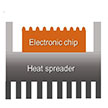 Heat dissipation has increasingly become a bottleneck for modern electronics. In particular, the development of wide bandgap semiconductor devices has led to many advancements of high power and high frequency electronics Scientists now have integrated new super thermal conductors - boron arsenide and boron phosphide that they developed recently - as a thermal substrate for power electronics devices such as gallium nitride high electron-mobility transistors. The study demonstrates high cooling performance better than the best state-of-the-art technologies.
Heat dissipation has increasingly become a bottleneck for modern electronics. In particular, the development of wide bandgap semiconductor devices has led to many advancements of high power and high frequency electronics Scientists now have integrated new super thermal conductors - boron arsenide and boron phosphide that they developed recently - as a thermal substrate for power electronics devices such as gallium nitride high electron-mobility transistors. The study demonstrates high cooling performance better than the best state-of-the-art technologies.
Jul 9th, 2021
 Hydrogels are fascinating natural or synthetic polymer materials that exhibit very versatile chemistries and physical or biological properties. They are 3D networks of either physically or chemically crosslinked polymers that resemble organic tissues and that can hold large amounts of water within their interlocked molecular network. These soft, translucent materials swell or shrink in response to water absorption or desorption and can hold a large amount of water without losing their structural integrity.
Hydrogels are fascinating natural or synthetic polymer materials that exhibit very versatile chemistries and physical or biological properties. They are 3D networks of either physically or chemically crosslinked polymers that resemble organic tissues and that can hold large amounts of water within their interlocked molecular network. These soft, translucent materials swell or shrink in response to water absorption or desorption and can hold a large amount of water without losing their structural integrity. 
 Subscribe to our Nanotechnology Spotlight feed
Subscribe to our Nanotechnology Spotlight feed





